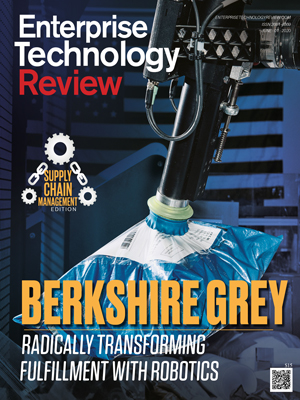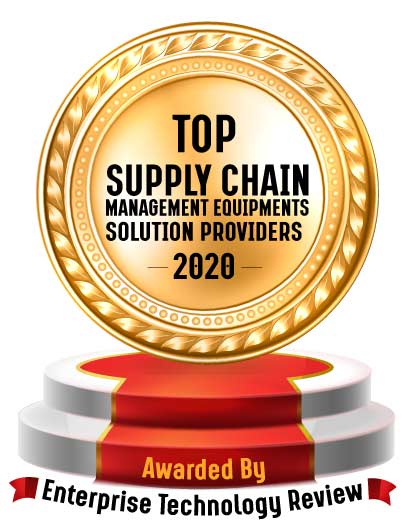 Thomas R. Cutler, President and CEO,TR Cutler
Thomas R. Cutler, President and CEO,TR CutlerTRC: What is the current state of Big Data and AI and 5G limitations for SMEs (small and mid-sized enterprises) adopting automation solutions, such as autonomous forklifts?
 GJ: To create more intuitive and useful software, many companies are harvesting Big Data and applying AI and Machine Learning techniques for incremental improvements in efficiency and uptime of automation solutions. Many of these techniques require processing power and storage availability, so cloud solutions enable the raw infrastructure required to make these adjustments in real-time. Many SMEs have bandwidth limitations and intermittent latencies that 5G promises to overcome; only then can higher layers of technologies ensure that the cloud-based solutions will impact a process or machine in real-time for the biggest benefit. While such optimization will occur, many smaller manufacturers must crawl before they walk and walk before they run.
GJ: To create more intuitive and useful software, many companies are harvesting Big Data and applying AI and Machine Learning techniques for incremental improvements in efficiency and uptime of automation solutions. Many of these techniques require processing power and storage availability, so cloud solutions enable the raw infrastructure required to make these adjustments in real-time. Many SMEs have bandwidth limitations and intermittent latencies that 5G promises to overcome; only then can higher layers of technologies ensure that the cloud-based solutions will impact a process or machine in real-time for the biggest benefit. While such optimization will occur, many smaller manufacturers must crawl before they walk and walk before they run.AI (artificial intelligence) and Deep Learning will be on the factory floors worldwide by 2030, but for many small and midsized manufacturers working to cope with COVID consequences, replacing a manned forklift with an autonomous forklift allows for a “baby step” into the future state while adhering to the imminent demands of social distancing. Getting decision-makers in SMEs to start with a single autonomous forklift is the first step in the process; the operations and facility managers understand that a single autonomous forklift is actually a good thing to improve quality, eliminate waste, and reduce costs.
SME manufacturers replacing 1 single manned forklift with 1 autonomous forklift
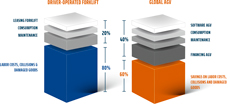 TRC: Are autonomous forklifts the logical way for small and mid-sized manufacturers to tiptoe into higher technologies? Is buy-in of this simple value proposition (moving product from A to B without a forklift driver) a good way to get started?
TRC: Are autonomous forklifts the logical way for small and mid-sized manufacturers to tiptoe into higher technologies? Is buy-in of this simple value proposition (moving product from A to B without a forklift driver) a good way to get started?
GJ: In general, the high technology trends will provide value in time to a variety of industries and products…but the top and immediate priority is dealing with employee safety, particularly during COVID.
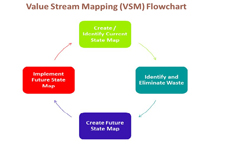 As manufacturers seekto improve production processes, there are many considerations. Facing an array of technologies that promises to help reach future state Value Stream Mapping (VSM) goals, small and midsized manufacturers must carefully evaluate options.
As manufacturers seekto improve production processes, there are many considerations. Facing an array of technologies that promises to help reach future state Value Stream Mapping (VSM) goals, small and midsized manufacturers must carefully evaluate options.
TRC: Are autonomous forklifts the transition to a future state identified in value stream mapping?
GJ: Yes. It is a great first step. There are some real potential benefits that AGV technology can bring to support specific industries. The challenges in e-commerce fulfillment are different than in a packaging plant, yet both are good candidates for an autonomous forklift. Global AGV aims to target simple and intuitive interfaces to allow autonomous forklifts to be made accessible by the 49% of the market that has nine or fewer forklifts in a small fleet.
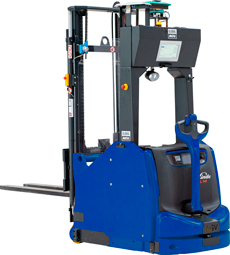 49% plan to acquire 9 or fewer forklifts this year, with 17% planning on< 3
49% plan to acquire 9 or fewer forklifts this year, with 17% planning on< 3
TRC: Since nearly half of all manufacturers are purchasing a handful of autonomous forklifts, how do companies cost-justify the migration away from manned forklifts?
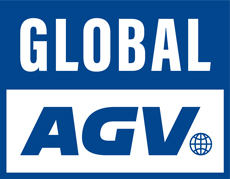 GJ: With nearly half of manufacturers testing single autonomous forklifts during COVID to adhere to strict social distancing, the benefits become obvious; equipment operates 24/7 and the A to B pragmatic solution is creating SME believers. For large manufacturers, about 20% looking to invest in large fleets of 50-100+ units, deployment of mobile technologies for intralogistics such as 3PLs (third party logistics) makes sense. For everyone else, a single autonomous forklift is where the journey begins.
GJ: With nearly half of manufacturers testing single autonomous forklifts during COVID to adhere to strict social distancing, the benefits become obvious; equipment operates 24/7 and the A to B pragmatic solution is creating SME believers. For large manufacturers, about 20% looking to invest in large fleets of 50-100+ units, deployment of mobile technologies for intralogistics such as 3PLs (third party logistics) makes sense. For everyone else, a single autonomous forklift is where the journey begins.
 TRC: Are autonomous forklifts the logical way for small and mid-sized manufacturers to tiptoe into higher technologies? Is buy-in of this simple value proposition (moving product from A to B without a forklift driver) a good way to get started?
TRC: Are autonomous forklifts the logical way for small and mid-sized manufacturers to tiptoe into higher technologies? Is buy-in of this simple value proposition (moving product from A to B without a forklift driver) a good way to get started?GJ: In general, the high technology trends will provide value in time to a variety of industries and products…but the top and immediate priority is dealing with employee safety, particularly during COVID.
 As manufacturers seekto improve production processes, there are many considerations. Facing an array of technologies that promises to help reach future state Value Stream Mapping (VSM) goals, small and midsized manufacturers must carefully evaluate options.
As manufacturers seekto improve production processes, there are many considerations. Facing an array of technologies that promises to help reach future state Value Stream Mapping (VSM) goals, small and midsized manufacturers must carefully evaluate options.TRC: Are autonomous forklifts the transition to a future state identified in value stream mapping?
GJ: Yes. It is a great first step. There are some real potential benefits that AGV technology can bring to support specific industries. The challenges in e-commerce fulfillment are different than in a packaging plant, yet both are good candidates for an autonomous forklift. Global AGV aims to target simple and intuitive interfaces to allow autonomous forklifts to be made accessible by the 49% of the market that has nine or fewer forklifts in a small fleet.
 49% plan to acquire 9 or fewer forklifts this year, with 17% planning on< 3
49% plan to acquire 9 or fewer forklifts this year, with 17% planning on< 3TRC: Since nearly half of all manufacturers are purchasing a handful of autonomous forklifts, how do companies cost-justify the migration away from manned forklifts?
 GJ: With nearly half of manufacturers testing single autonomous forklifts during COVID to adhere to strict social distancing, the benefits become obvious; equipment operates 24/7 and the A to B pragmatic solution is creating SME believers. For large manufacturers, about 20% looking to invest in large fleets of 50-100+ units, deployment of mobile technologies for intralogistics such as 3PLs (third party logistics) makes sense. For everyone else, a single autonomous forklift is where the journey begins.
GJ: With nearly half of manufacturers testing single autonomous forklifts during COVID to adhere to strict social distancing, the benefits become obvious; equipment operates 24/7 and the A to B pragmatic solution is creating SME believers. For large manufacturers, about 20% looking to invest in large fleets of 50-100+ units, deployment of mobile technologies for intralogistics such as 3PLs (third party logistics) makes sense. For everyone else, a single autonomous forklift is where the journey begins.|
Share this Article:
Tweet
|
Top


